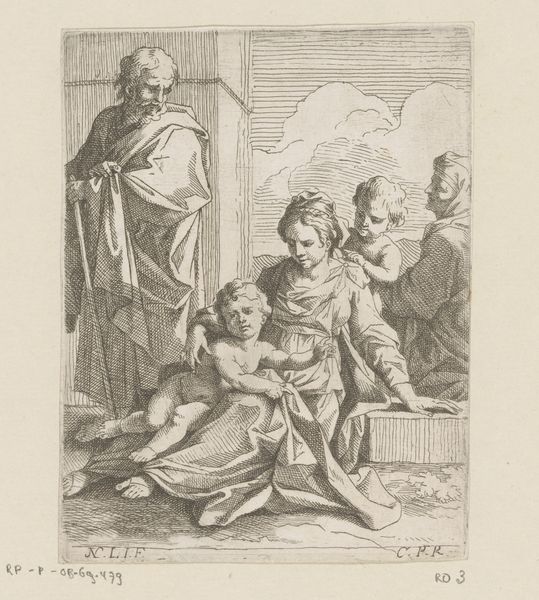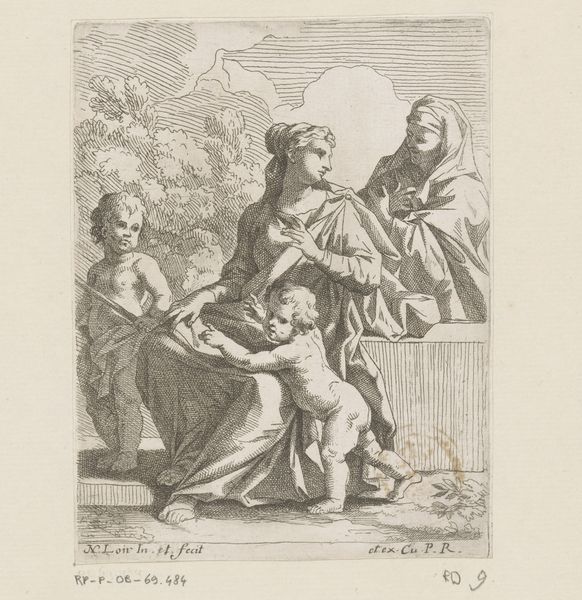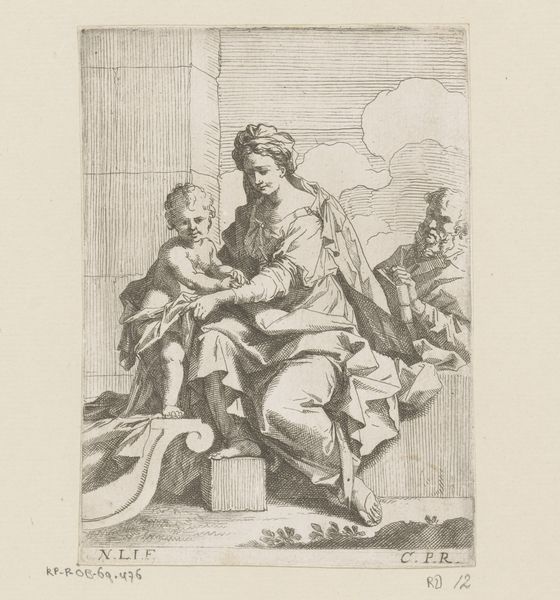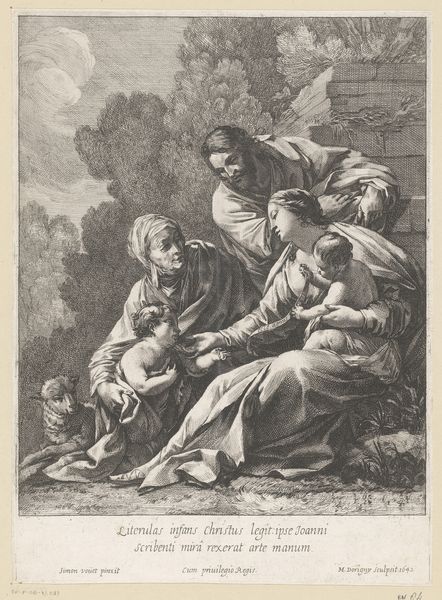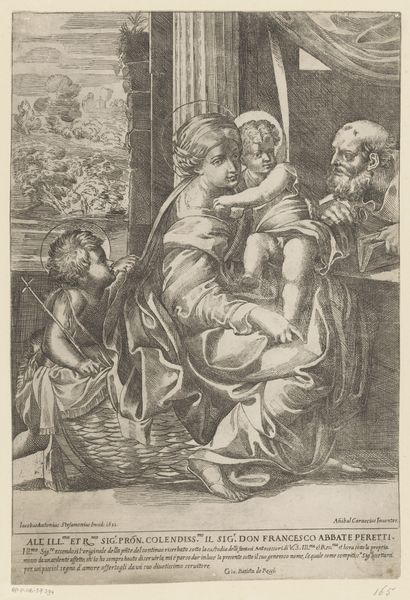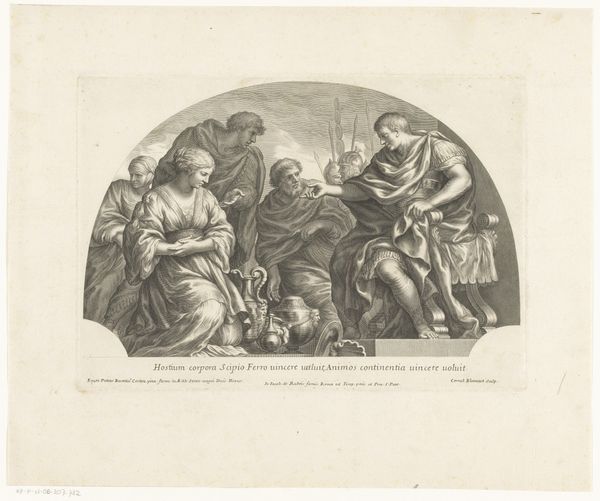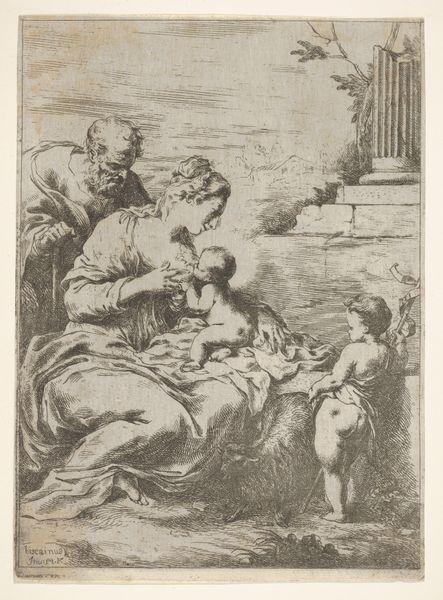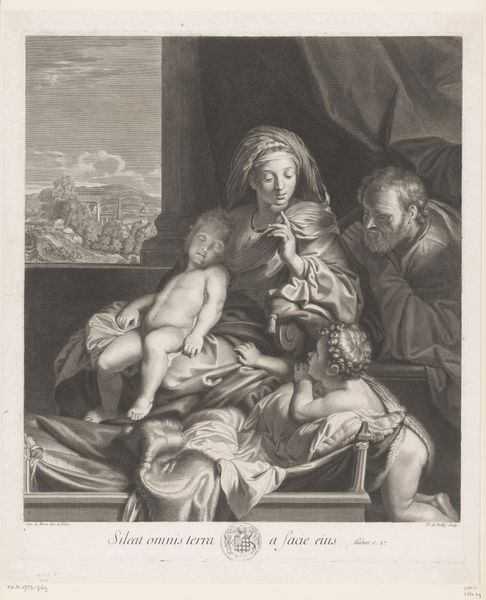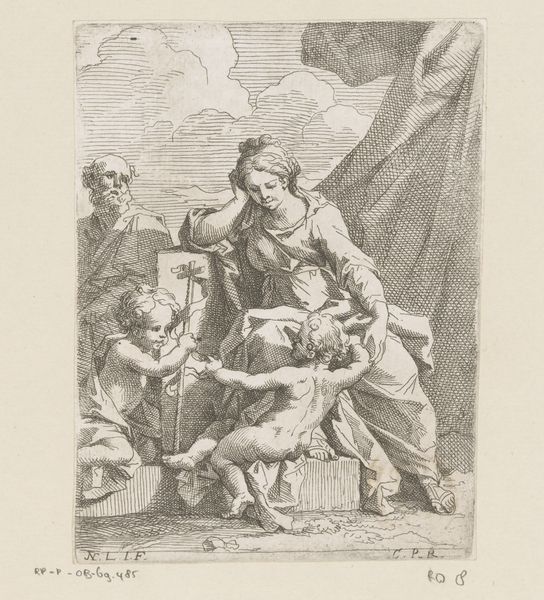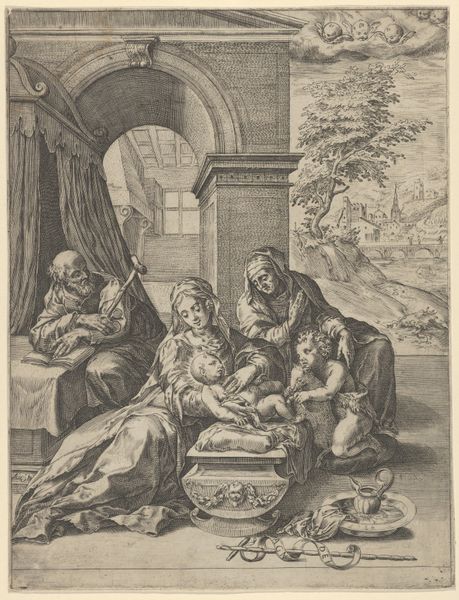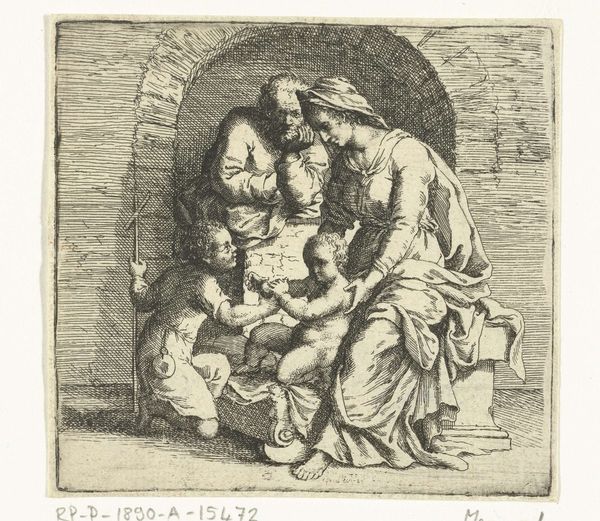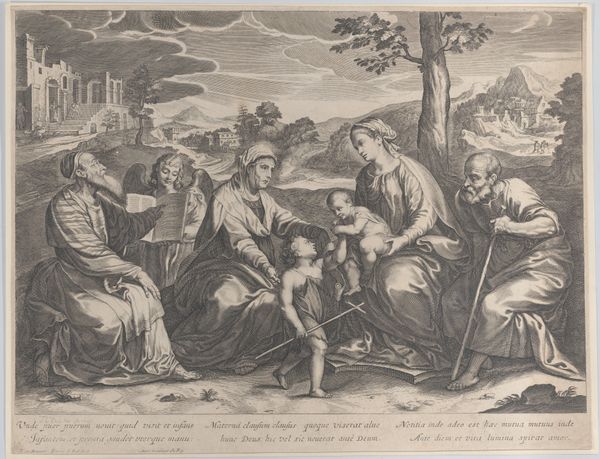
engraving
#
old engraving style
#
figuration
#
11_renaissance
#
history-painting
#
engraving
Dimensions: height 149 mm, width 108 mm
Copyright: Rijks Museum: Open Domain
Curator: There's such a serene stillness radiating from this engraving. It reminds me of hushed mornings in my grandmother's garden. Editor: Indeed. What we’re viewing is an engraving called "Maria met Kind, Johannes en Elisabeth," placing its creation somewhere between 1634 and 1679, and attributed to Nicolas Pierre Loir. You can find it on display at the Rijksmuseum. Curator: Loir captures the sacred scene with such gentle, almost hesitant lines, doesn’t he? It feels incredibly intimate for a history painting, really. Editor: That intimacy might stem from its material form: an engraving. The detail certainly emphasizes closeness, yet these subjects are historically positioned within narratives of power. The representation of Mary and Elizabeth, in particular, reflects larger socio-political investments in ideas of purity, motherhood, and lineage. Curator: Of course, but the babies! The chubby cheeked, vaguely alarmed cherubs distract me with their…palpable existence. Did all babies look so wonderfully doughy back then, or is that Loir adding his own twist? Editor: Childlike innocence has consistently been a subject of European art for centuries, but the visual language deployed—whether to inspire joy, fear, or some other reaction—varied according to what sort of response artists, commissioners, and patrons were trying to evoke, and when. Consider the cultural stakes of maternity during Loir's era and we must view them as ideological figures. Curator: Perhaps. It's easy to get caught up in what these historical and mythological figures mean. Sometimes I like to just let it be a sweet scene. Art is about emotion, right? Editor: Well, my friend, "emotion" is coded within broader social frameworks. These depictions are as much about private devotion as they are about public messaging, negotiating ideals of femininity and power dynamics of family and state. Curator: It's fascinating how a few etched lines can spark so much contemplation. Even with art hundreds of years old. Editor: Precisely. This work showcases that an artwork, however simple, holds many historical and critical layers just beneath the surface.
Comments
No comments
Be the first to comment and join the conversation on the ultimate creative platform.
